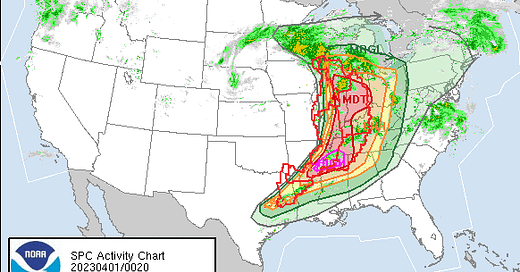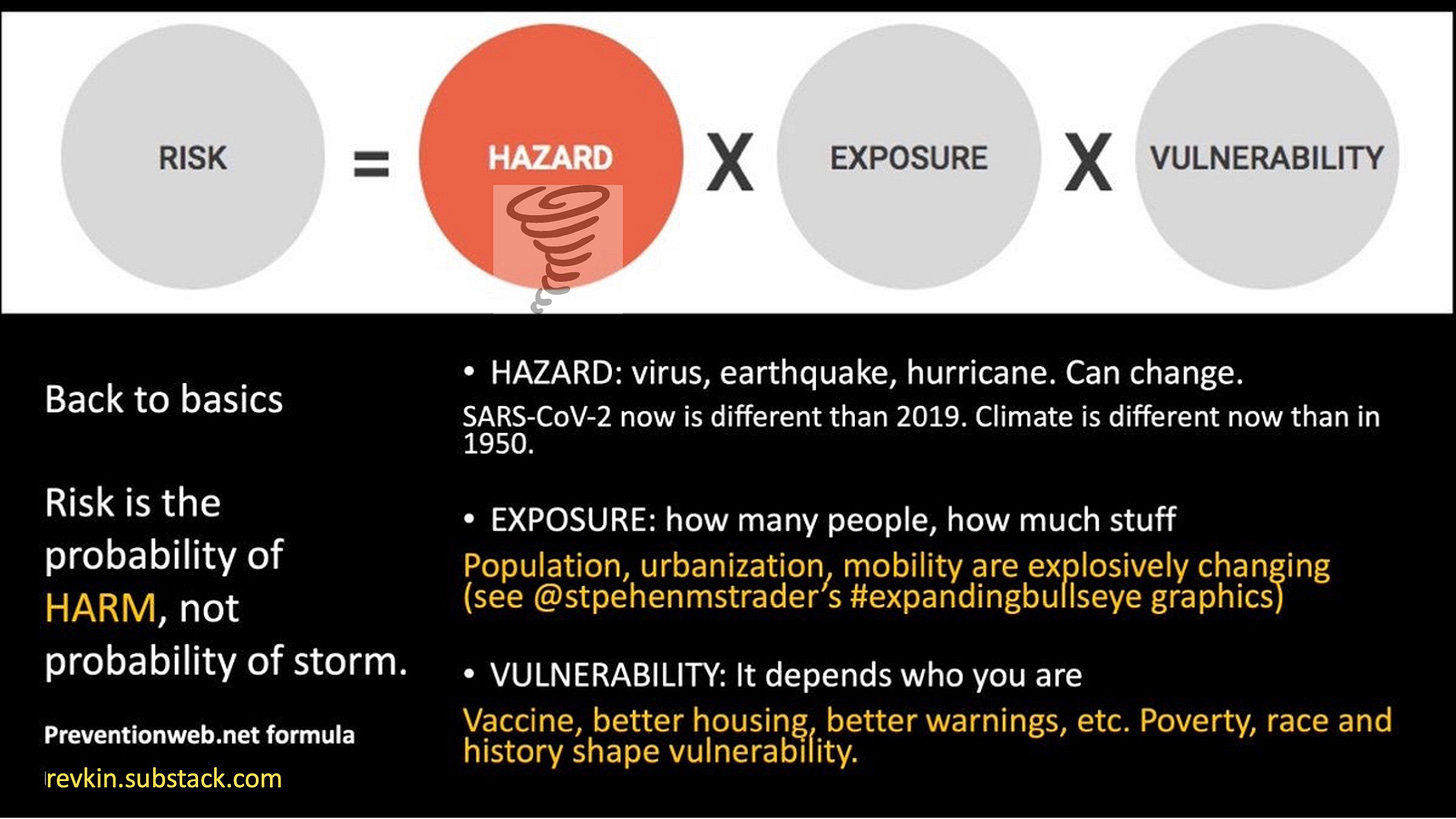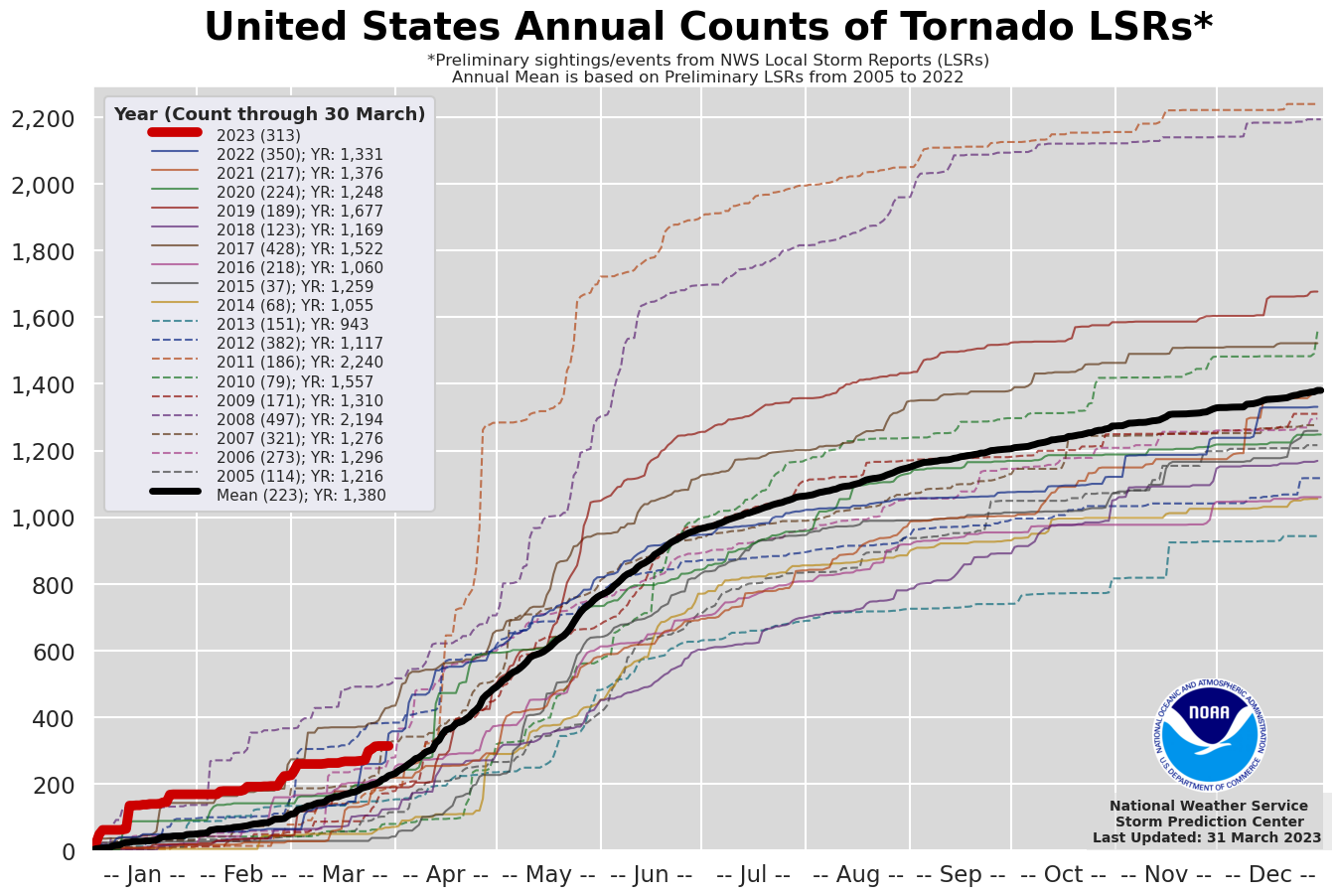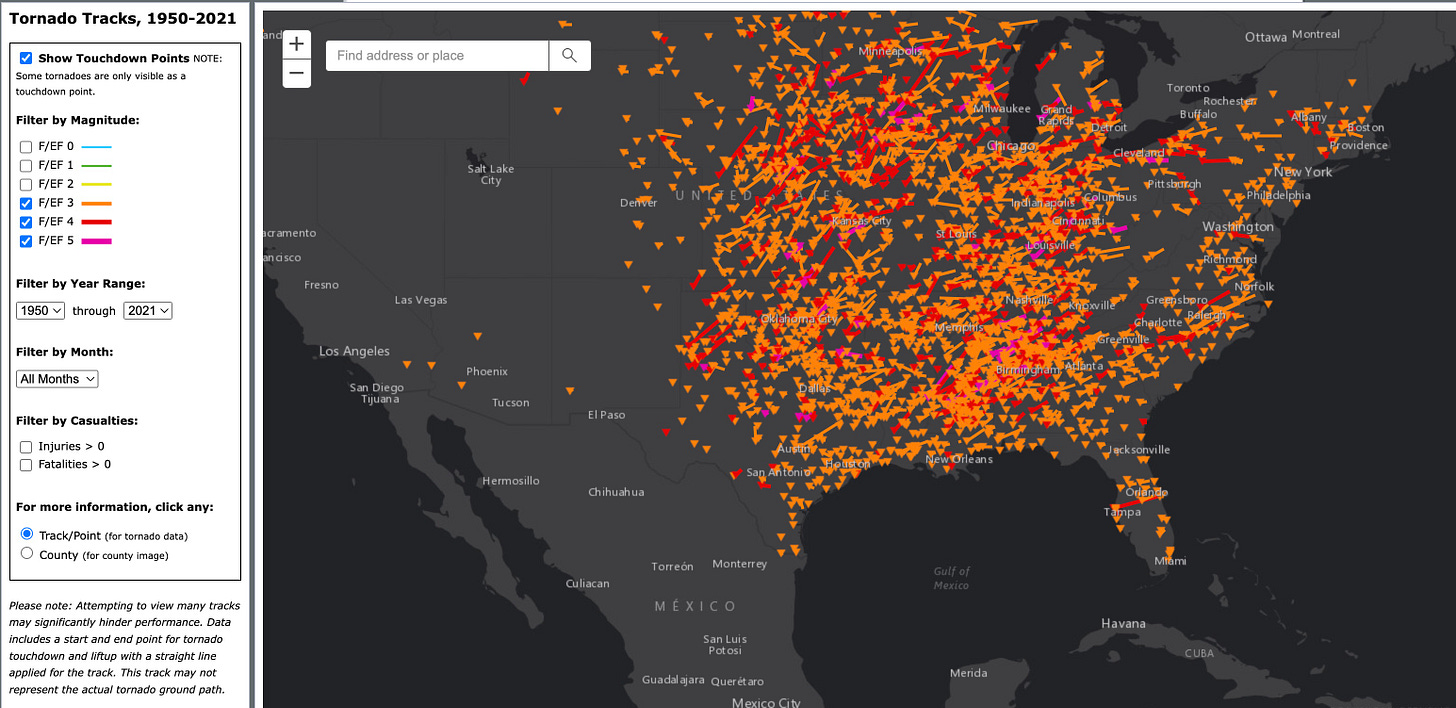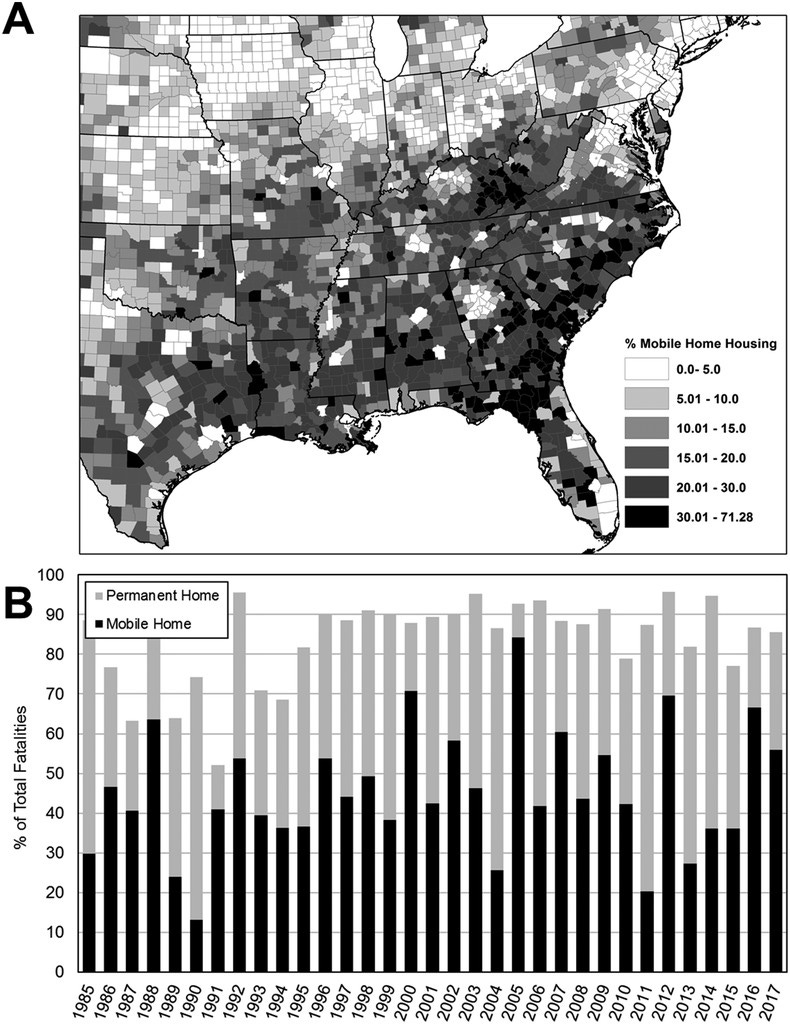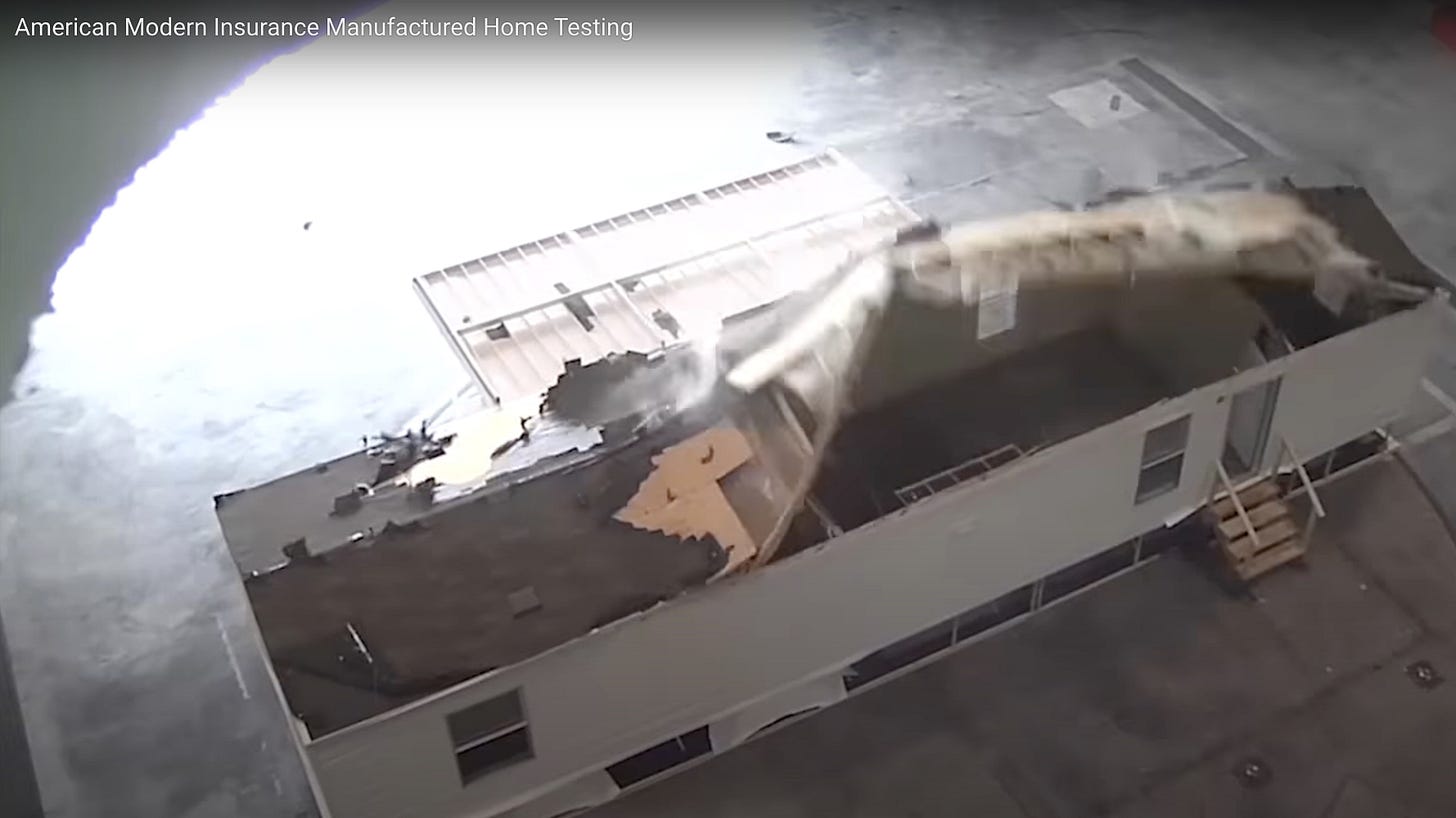Seeking Safer Shelter as Death Counts Rise in America's Shifting Tornado Danger Zones
Here are some solution pathways to assess as headlines hopscotch from one tornado to the next.
INSERT - Watch my Sustain What webcast with some of America's top experts on how to build safer in tornado danger zones. I was joined by Daphne LaDue of the University of Oklahoma, Ian Livingston of the Washington Post’s Capital Weather Gang blog, the “expanding bull’s eye effect” researchers Steve Strader of Villanova and Walker Ashley of Northern Illinois University, Julie Rochman, board chair at Smart Home America, and Jim Ayotte, CEO of the Florida Manufactured Housing Association.
We examined industry assertions that manufactured homes (which you likely know best as mobile homes) are as safe as regular habitation. There was a lot of agreement on prioritizing steps to be sure these homes are anchored using best practices, something many states in the South have not pursued. There were some points of disagreement but much to agree on and work on!
You can also watch and share on Facebook, Twitter and LinkedIn.
Original post
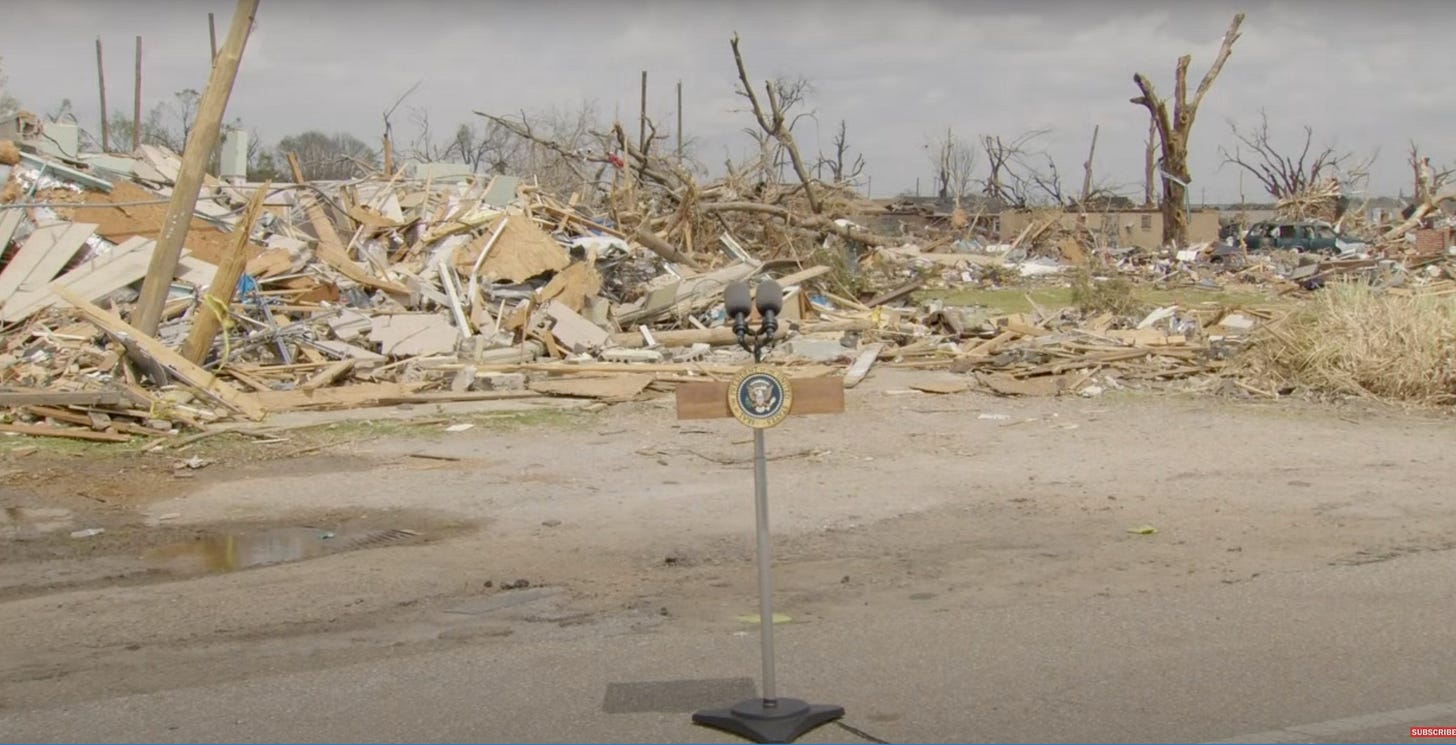
This piece was posted in March 2023 but is sadly relevant every time strong tornadoes hit vulnerable communities:
Once again, a president was in an all-too-familiar role - hugging survivors of a potent tornado and pledging federal help at a microphone positioned in front of the latest mound of wind-shredded hopes and dreams.
The president Friday was Joe Biden and the tragedy was the destruction and deaths from an EF-4 tornado, one week ago, in Rolling Fork, Mississippi, and other nearby storm-struck communities. (Click back to see Biden in Bowling Green, Kentucky, in December, 2022, and Donald Trump in the same mode in Alabama in 2019; you can widen the lens of course to hurricane or wildfire.)
Today’s presidential disaster-zone tour was followed shortly afterward by a potent tornado strike on Little Rock, Arkansas.
That was the first storm triggered by a powerful - and well predicted - severe storm front that had the National Weather Service warning all day of the threat of tornadoes across a vast swathe of the Midwest and mid-South (keep track here):
You’ll be tracking a lot of news reports and tweets about this surge of tornado weather into the weekend.
But I’m posting today to encourage you to step back from the news flow to ponder a foundational driver of deadly outcomes - and it’s not in the sky.
As I’ve written over and over, risk only exists if there’s a hazard (here, tornadoes) plus people or property exposed and vulnerable to that hazard. Obviously we’re not going to depopulate the Southeast and Midwest, which means the only strategies for safer living center on cutting vulnerability. Here’s the pocket card I created showing how this cuts across all kinds of risk:
Add people to a tornado zone without adding storm-resistant housing and workplaces or quick paths to shelter and you’re building inevitable disasters just as much as Turkish builders were putting up “rubble in waiting” ahead of inevitable earthquakes.
The data
There’ve been tornado droughts and surges in recent decades. So far, 2023 (the fat red line below) is running above average in the National Oceanic and Atmospheric Administration’s month-by-month data.
But the long-term map of America’s tornado danger zone shows just how normal the threat is. (This version is from Purdue; I’ve just included tornadoes in the top three levels of destructive potential - EF3-4-5. Tornadoes in those categories, by far, cause the most damage and death. You can explore the map here.)
The expanding bull’s eye
When you superimpose the growth in populations in the same regions and paucity of tornado-resistant housing, you see the “expanding bull’s eye” of risk that geographers Stephen M. Strader and Walker Ashley have so effectively, and chillingly, mapped.
Of particular concern are what are most familiarly known as mobile homes but which, in recent decades have been called manufactured homes.
Compare the map above to this map and fatality comparison from a 2018 paper by Strader and Ashley: Finescale Assessment of Mobile Home Tornado Vulnerability in the Central and Southeast United States:
Then look at this tweet on the day of the Rolling Fork catastrophe from David Roueche, an engineering professor at Auburn University “applying engineering principles to understand and reduce impacts of weather-related natural hazards”:



Finally, re-read what Stephen Strader prophetically tweeted many hours before the March 25th tornado blasted into Rolling Fork:
“All boxes checked for a high-fatality tornado. Strong to violent tornado, long-tracked (it seems), nocturnal, middle of one of the most socially vulnerable regions in the country, small poverty-stricken communities, weak housing stock (e.g., manufactured homes). #tornado #mswx”


There’s lots more to write about manufactured/mobile homes; we’ll go deep in a later post. But in the meantime here are two hints:
A 2014 insurance-industry video of tests of what happens to a typical manufactured home (with add-ons like a carport) in tornado-strength winds:
A surreal, yet real, report on “Trailer Park Millionaires” by Rupert Neate, wealth correspondent for The Guardian, looking at newcomers to the world of investing in low-income housing as they attended Mobile Home University back in 2015.
And just in case you think that Guardian report is dated somehow, Mobile Home University, which focuses on buying and selling mobile home parks (not the structures themselves), appears to be alive and well, with this line on the company website explaining why: “With over 20% of Americans trying to live on $20,000 per year or less, the demand for mobile homes has never been higher - and the big winners are the owners of the mobile home parks in which those customers reside.”
Also read:
Seeking Paths from Vulnerability to Safety in Tornado Hot Zones
When a Killer Tornado Destroyed a Sprawling Factory and Nobody Died - Lessons for Amazon
on What the media won't tell you about...Tornadoes

